
A barometer is a scientific instrument that is used to measure air pressure in a certain environment. Pressure tendency can forecast short term changes in the weather. Many measurements of air pressure are used within surface weather analysis to help find surface troughs, pressure systems and frontal boundaries.

Glasses, also known as eyeglasses or spectacles, are vision eyewear with clear or tinted lenses mounted in a frame that holds them in front of a person's eyes, typically utilizing a bridge over the nose and hinged arms, known as temples or temple pieces, that rest over the ears.

Bifocals are eyeglasses with two distinct optical powers. Bifocals are commonly prescribed to people with presbyopia who also require a correction for myopia, hyperopia, and/or astigmatism.

Sunglasses or sun glasses are a form of protective eyewear designed primarily to prevent bright sunlight and high-energy visible light from damaging or discomforting the eyes. They can sometimes also function as a visual aid, as variously termed spectacles or glasses exist, featuring lenses that are colored, polarized or darkened. In the early 20th century, they were also known as sun cheaters.

Optometry is a specialized health care profession that involves examining the eyes and related structures for defects or abnormalities. Optometrists are health care professionals who typically provide comprehensive eye care.

John Dollond was an English optician, known for his successful optics business and his patenting and commercialization of achromatic doublets.
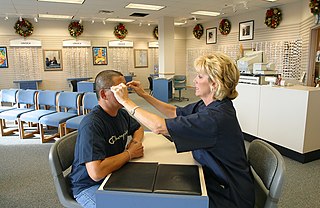
An optician is an individual who fits eyeglasses or contact lenses by filling a refractive prescription from an optometrist or ophthalmologist. They are able to translate and adapt ophthalmic prescriptions, dispense products, and work with accessories. There are several specialties within the field.
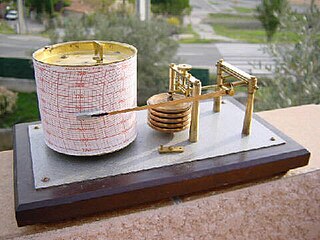
A barograph is a barometer that records the barometric pressure over time in graphical form. This instrument is also used to make a continuous recording of atmospheric pressure. The pressure-sensitive element, a partially evacuated metal cylinder, is linked to a pen arm in such a way that the vertical displacement of the pen is proportional to the changes in the atmospheric pressure.

Jesse Ramsden FRS FRSE was a British mathematician, astronomical and scientific instrument maker. His reputation was built on the engraving and design of dividing engines which allowed high accuracy measurements of angles and lengths in instruments. He produced instruments for astronomy that were especially well known for maritime use where they were needed for the measurement of latitudes and for his surveying instruments which were widely used for cartography and land survey both across the British Empire and outside. An achromatic eyepiece that he invented for telescopes and microscopes continues to be known as the Ramsden eyepiece.

Sir Charles Hanbury Williams, KB was a Welsh diplomat, writer and satirist. He was a Member of Parliament from 1734 until his death.

Samuel Ayscough (1745–1804) was a librarian and indexer, who was described as the "Prince of Index Makers".
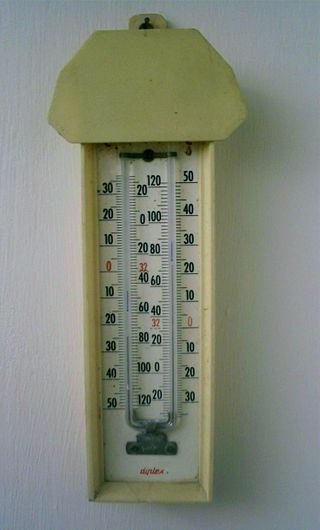
Six's maximum and minimum thermometer is a registering thermometer that can record the maximum and minimum temperatures reached over a period of time, for example 24 hours. It is used to record the extremes of temperature at a location, for instance in meteorology and horticulture. It was invented by the British scientist James Six, in 1780; the same basic design remains in use.
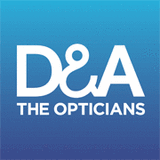
Dollond & Aitchison was one of the oldest chains of retail opticians in the United Kingdom, having been established in 1750. The business was absorbed into Boots Opticians in 2009 and stores were rebranded under the Boots Opticians name, completed in 2015.

John Huxham (1692–1768) was an English physician, a provincial doctor notable for his study of fevers. In 1750 Huxham published his Essay on Fevers and in 1755 received the Copley Medal for his contribution to medicine.

Ainscough is an Old Norse, Scandinavian surname, also spelled Ayscough, Aiskew, Askew, Ascough and Aynscough.

The following outline is provided as an overview of and topical guide to the field of Meteorology.
The University of Reading Atmospheric Observatory, is an atmospheric observatory and weather station located on the Whiteknights Campus of the University of Reading. It forms part of the university's Department of Meteorology. The site at its current location has been a centre for atmospheric research since 1970, but the weather record was originally started by the University College of Reading in 1901 at the London Road campus as a rainfall station with a near complete daily record from January 1908. Automatic meteorological observations are continually recorded at the site and available online

James Henry Marriott was a New Zealand theatre manager, actor, entertainer, playwright, songwriter, engraver, optician and bookseller. He was born in London, England, and arrived in New Zealand three years after the Wellington area was first settled. In Wellington he was involved with theatrical production at the Ship Hotel, Olympic Theatre, Britannia Saloon and Royal Lyceum. He made himself useful in the early days of the settlement by engraving tombstones, engraving illustrations for newspapers, and grinding lenses for telescopes. He ran a bookshop and sold sheet music, and contributed to the organised social and civic life of Wellington. In New Zealand he was the first regular producer of plays, a playwright, and the first optics professional in that country to make a telescope. He was the father of Alice Marriott and the great-grandfather of Marriott Edgar and Edgar Wallace.

John Browning was an English inventor and manufacturer of precision scientific instruments in the 19th and early 20th centuries. He hailed from a long line of English instrument makers and transformed the family business from one dealing in nautical instruments to one specialising in scientific instruments. Browning was particularly well known for his advances in the fields of spectroscopy, astronomy, and optometry.
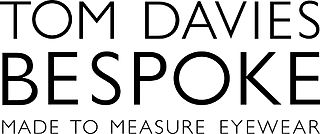
TD Tom Davies is a British handmade eyewear brand, founded by Tom Davies in 2002. TD Tom Davies offers a bespoke service on all frames of their collections. Its headquarters is in West London.


















